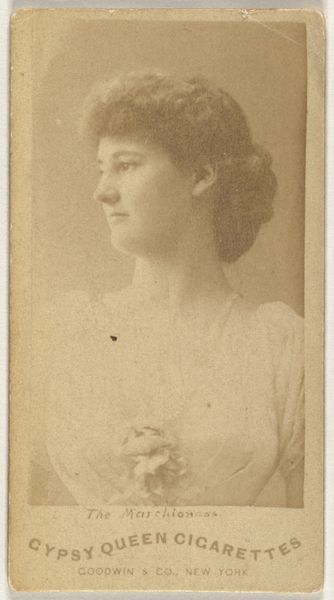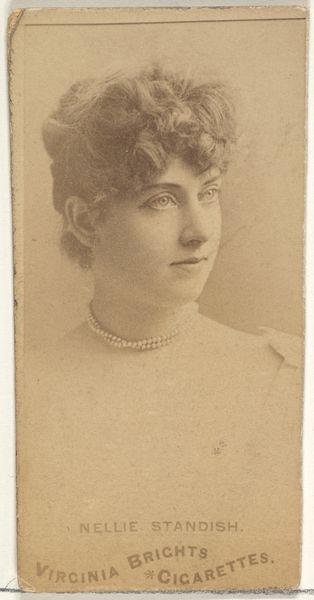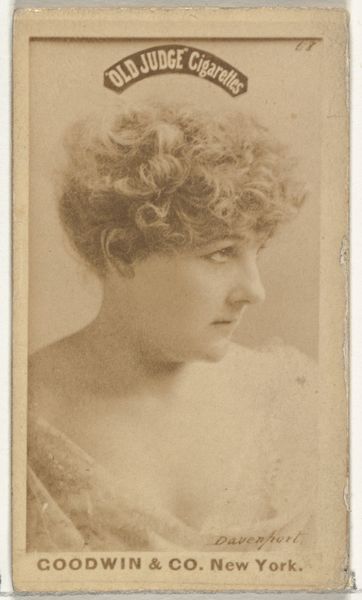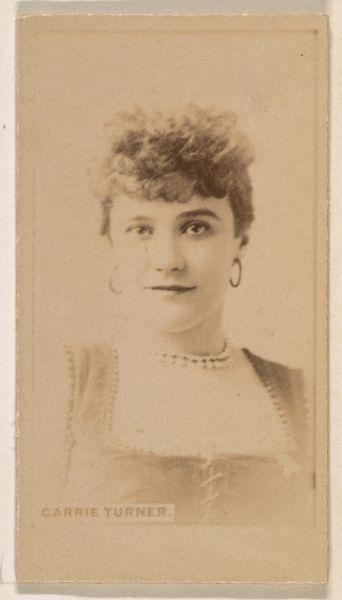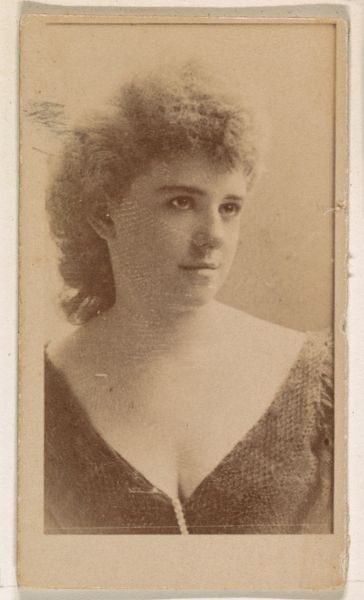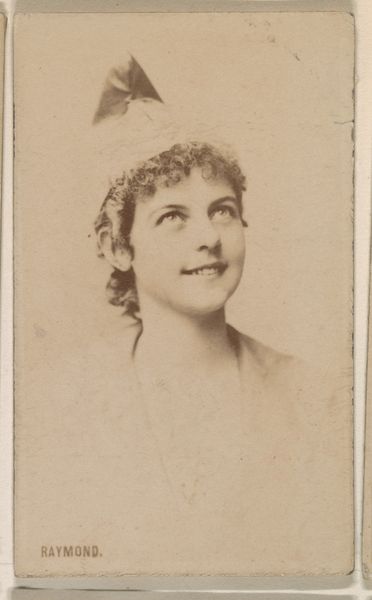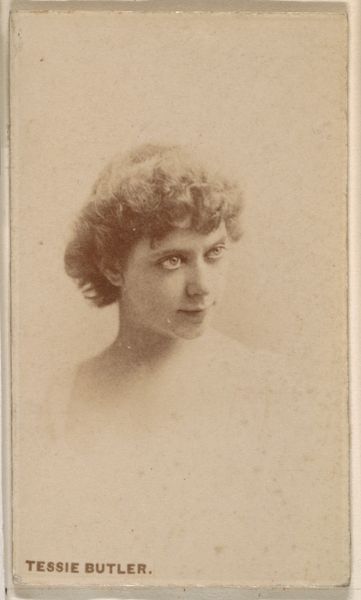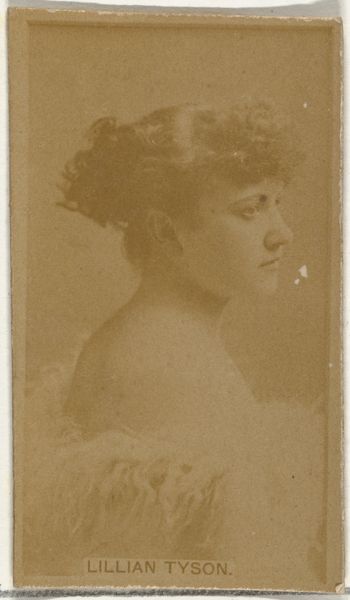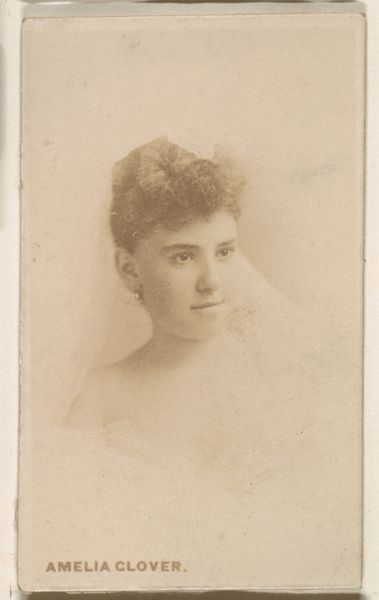
Miss Langdon, from the Actors and Actresses series (N45, Type 3) for Virginia Brights Cigarettes 1885 - 1891
0:00
0:00
drawing, print, photography
#
portrait
#
drawing
# print
#
photography
Dimensions: Sheet: 2 3/4 x 1 3/8 in. (7 x 3.5 cm)
Copyright: Public Domain
Curator: Let's turn our attention to this fascinating trade card, "Miss Langdon, from the Actors and Actresses series (N45, Type 3) for Virginia Brights Cigarettes," dating from 1885 to 1891. Editor: There's a palpable tension between the opulence suggested by her faint crown and the ephemerality of its context as a cigarette advertisement. I immediately wonder about the economic realities that linked performers and mass-produced tobacco products. Curator: Exactly. The piece is a marriage of photography and printmaking. Note the smooth gradations of tone in her face, rendered with an almost classical smoothness that's very artful. Editor: And that smoothed appearance speaks directly to the techniques of mass production. We’re looking at the commodification of image and fame, transforming the actress Miss Langdon into a kind of circulating icon, fueled by a network of factories, distribution channels, and consumer habits. What material processes ensured the consistency needed for widespread distribution? Curator: It’s compelling to consider how these portraits operated within a formal visual economy. The framing of her gaze, directed off to the side, generates a field of aesthetic energy and suggests a kind of introspective turn. This echoes popular portrait conventions while strategically positioning the product in relation to feminine beauty. Editor: I find that so much of its value lies in unveiling hidden structures of labor. Think of the tobacco farmers, the factory workers churning out cigarettes, the marketing strategies designed to associate smoking with glamour and social mobility. Where was this printed? Curator: These were produced by Allen & Ginter in Richmond, Virginia. What really captures me is how this ordinary object becomes such a revealing historical artifact, brimming with the dreams, desires, and commercial activities of its time. Editor: Ultimately, by examining the materiality of the artwork, we uncover how artistic expression is inextricable from social and economic forces, broadening our understanding.
Comments
No comments
Be the first to comment and join the conversation on the ultimate creative platform.




